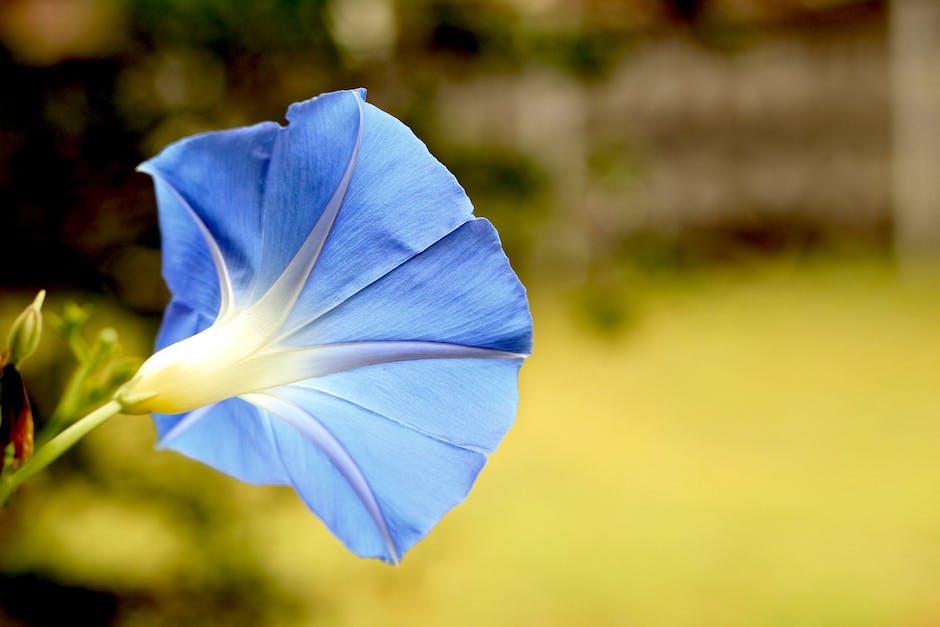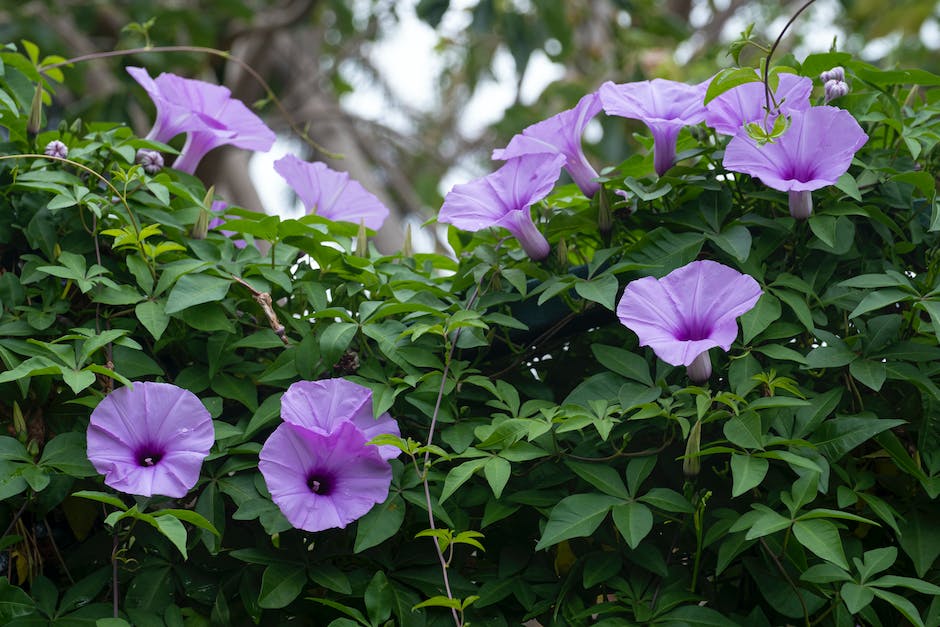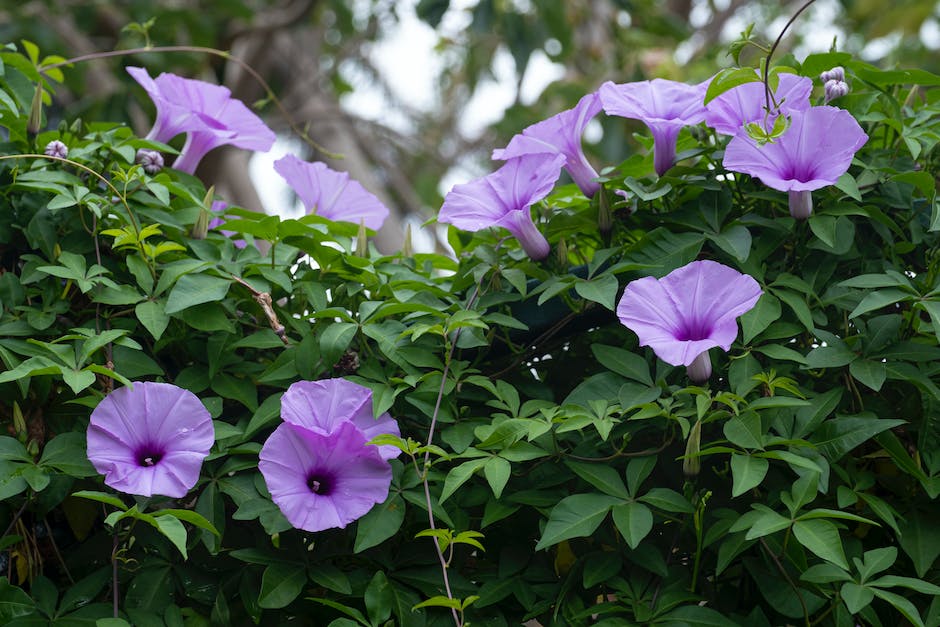Eradicate Morning Glory: A Hands-On Guide

Morning glory, with its charming and colorful blooms, can seem like a delightful addition to your garden until its rapid, aggressive growth begins to take over. As a vigorous climber and ground cover, it can unfortunately choke out other plants, and disrupting this cycle becomes essential. To understand how to successfully remove and manage morning glory, it’s first important to gain an understanding of this plant: its life cycle, why it quickly out of control, and why removing it is necessary for the well-being of your garden. The various strategies for removal such as manual extraction, using specific tools, and applying herbicides provide a range of options to consider. Additionally, with a focus on long-term solutions, prevention and maintenance practices will ensure this hardy vine doesn’t make an unwelcome return to your garden space.
Understanding Morning Glory
Uncovering the Beauty and the Beast – The Captivating Tale of Morning Glory
Morning Glory, a name synonymous with serene natural beauty and, at the same time, the cause of many a gardener’s nightmare. Iridescent, ephemeral, and alluring, Morning Glory flowers have an unquestionably magnetic charm. But if one peeks beneath this beautiful façade, the unyielding nature of this green invader awaits discovery.
Morning Glory, botanically acknowledged as Ipomoea, is a genus of more than 500 species. Best known for their heart-shaped leaves and trumpeting blossoms that open at dawn’s earliest light, these spellbinding blooms mesmerize onlookers in hues of blue, pink, purple, and white. Morning Glories, originating in tropical and subtropical regions, have an ivy-like growth habit that can climb, sprawl, or trail beautifully in garden spaces.
But what explains the ‘invasive’ tag? As picturesque as Morning Glories may seem, these plants have proven to be a paradox for enthusiasts and gardeners alike. The reason centers around the plant’s vigorous growth, relentless self-seeding, and daunting resilience.
Morning Glory grows rapidly, overshadowing its counterparts, with its vines capable of extending up to 15 feet in a single season. This vigorous growth inhibits other plants’ development significantly, depriving them of essential resources like sunlight, space, and nutrients.
The term ‘invasive’ is often ascribed to species that reproduce at an alarming rate, and Morning Glory is a poster child for this category. Each plant can produce hundreds of seeds, and these seeds find their way into the surrounding landscape with ease. With each seed holding the potential to start a new plant, a tiny patch of Morning Glories can quickly transform into an unmanageable infestation.
Resilience is another flag-factor. These stubborn plants can endure a wide range of harsh environmental conditions, minimally phased by attempts to eradicate them. Additionally, the Morning Glory seed coat is hardy and can remain dormant for years before germinating, making it a tough adversary in a traditional garden scenario.
The shift in perspective from ‘coveted bloom’ to ‘green invader’ is merely a manifestation of this plant’s inherent survival strategy. For a Morning Glory, the world is but an endless garden to color and conquer. For the gardening enthusiast, the same world is a delicate ecosystem to guard.
Having welcomed this flower into a garden setting or wishing to do so, keep in mind the dual, inherent nature of this captivating specimen – its undeniable beauty and its potential to overtake your carefully curated landscape. Understanding the Morning Glory can pave the way towards managing its presence responsibly and enjoying its splendor without the repercussion of an unintended invasion.

Methods of Removal
Mastering the Morning Glory: Proven Methods for Taming the Blooming Beast
As enchanting and visually striking as the Morning Glory may be, its robust nature and rapid growth tendencies can swiftly transform a manicured garden into a battle zone. Much like unruly children, Morning Glories need discipline, proper guidance, and boundaries to flourish without stealing the limelight. Here, you’ll encounter proven methods that stand up to the challenge of this mischievous, yet beloved flora.
Before we dive into the solutions, there’s a crucial factor to remember. No matter the method used, persistence is key in keeping the Morning Glory at bay. Regular monitoring and consistent action are prerequisites for success. Even a small lapse could give these mavericks the green light to overthrow your garden party.
First and foremost is the method of “physical removal”. It may seem straightforward, but this method requires a meticulous approach. Using a garden fork or a hooked weed tool, carefully uproot the Morning Glory, ensuring that no fragments are left behind. For the seedlings, hand-pulling is adequate. However, with the Morning Glory, vigilance is paramount as even a tiny remnant can foster regrowth. It’s an ongoing process, but with regular weeding, you’ll maintain control over the Morning Glory invasion.
Next in line among our proven solutions is the “mulching” technique. A layer of mulch prevents sunlight from reaching the soil, thereby hindering the growth of Morning Glory seedlings. Aim for at least 3 inches of organic or inorganic mulch to act as a protective barrier against these intruders. Remember to replenish the mulch layer as it breaks down over time, ensuring it prosecutes its sun-blocking role efficiently.
Leveraging the power of “crowding” is another effective approach. Planting vigorous, fast-growing groundcovers or adding vertical structures draped with climbers can inhibit the growth of Morning Glory. By providing less room for expansion, these invincible climbers will have a lessened chance to invade.
Finally, we discuss “chemical warfare”. Certainly, the last resort, as the indiscriminate use of herbicides can potentially harm beneficial organisms and disrupt the ecosystem balance. However, for severe infestations, a glyphosate-based herbicide, judiciously applied, can be the necessary lesser evil. It’s crucial to target only the Morning Glory, minimizing ‘collateral damage’ to nearby desirable plants.
Taming Morning Glory isn’t a one-time job, but rather an ongoing gardening commitment. Over time, with unwavering consistency, it’s possible to coexist with these drama queens of the garden. After all, their mesmerizing spiraling vines and exquisite blooms make it a worthy endeavor.

Prevention and Maintenance
Transition from Admiring Morning Glories to Managing Them: Effective Methods to Disarm this Lovely Invader
Dazzling in its myriad hues, Morning Glory can be fascinatingly treacherous. The turning point is the moment when admiration morphs into desperation due to the plant’s invasive nature. Today, let’s take off our rose-colored glasses and get down to the strategically challenging task of robbing Morning Glory of its unwanted glory.
Every gardener’s first line of defense against Morning Glory is maintaining a strict discipline within the garden. The habit of monitoring new growth while trimming the plants regularly can dictate how exactly Morning Glory behaves. By limiting its growth outside its allotted space, it can be kept in check effectively. Persuading Morning Glory to adhere to boundaries is essentially a lesson in asserting garden territorial rights.
Persistence can pay off, literally, in the weed-ridden battlegrounds of a garden. If Morning Glory has wiggled its way into your garden, don’t lose heart. A regular regime of uprooting and hand-pulling can work wonders. Though this method of physical removal requires time and effort, the results ensure a managed growth successfully dwarfing the Morning Glory invasion.
An ancillary prevention tactic is mulching. A good thick layer of mulch not only keeps the soil moist and rich in nutrients but can also smother the Morning Glory seedlings before they even think to sprout. By blocking sunlight from reaching these seedlings, you effectively sabotage their germination efforts. It’s a quiet and easy method, using nature to work against itself!
If you’re looking for a more vigorous remedy, consider the implementation of groundcovers and vertical structures. By planting aggressive, yet desirable, groundcovers, you can crowd out Morning Glory even before it sets foot. Simultaneously, vertical structures aid in a healthy upward growth, reducing area coverage and limiting territorial spread.
Sometimes, dealing with Morning Glory calls for absolute war, and chemical warfare, at that. Just remember to be very judicious and strategic about the use of herbicides, targeting Morning Glory specifically and sparing other plants. Incorporate these substances caveatedly and carefully to shield your garden effectively.
To conclude, this lovely, yet pesky plant demands an unwavering commitment for management. There’s no room for complacency when it comes to this sneaky squatter. Arm yourself with knowledge, keep your tools handy, and jump into action at the first sight of Morning Glory making an unauthorized entry! With the right plan, discipline, and consistency, you can ensure your garden’s sanctity against this charismatic invader.
Remember, gardening isn’t just about fostering growth but facilitating a harmonized ecosystem within the garden walls where all elements thrive without overpowering others. Here’s to gardening and being a mindful steward of nature!

After obtaining a clear understanding of morning glory and its habit of garden invasion, as well as comprehensive exploration of distinct removal methods, you are now equipped to reclaim your garden from this invasive species. The journey, however, does not end at removal. Incorporating regular prevention and maintenance practices guarantees not just short-term relief but also a long-term solution. The ultimate goal is a thriving garden, free from the threat of morning glory, where you have full control over what grows and where. Armed with this knowledge, you’re one step closer to achieving a beautiful, balanced outdoor refuge that coexists in harmony with nature.



